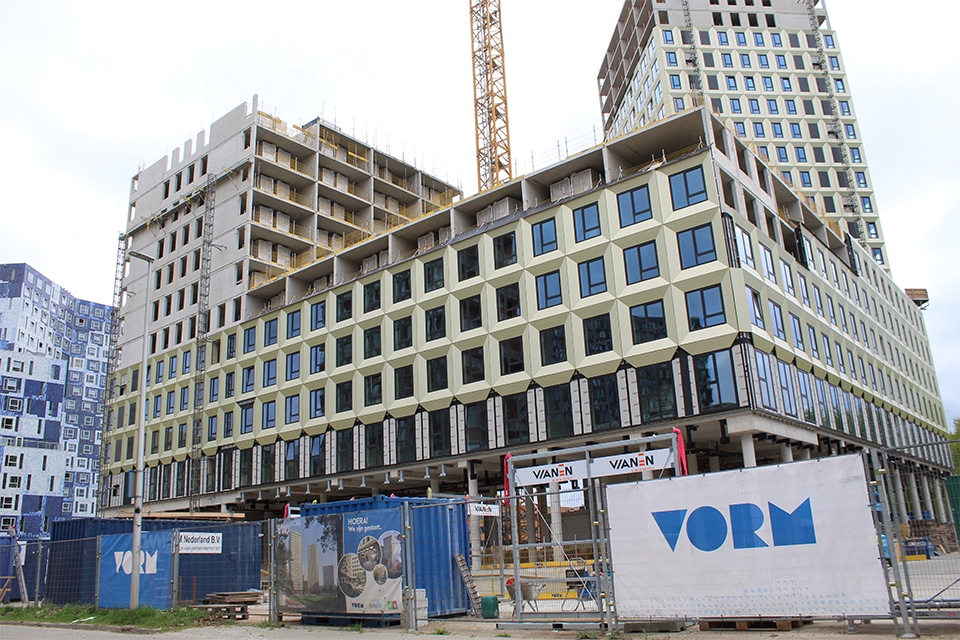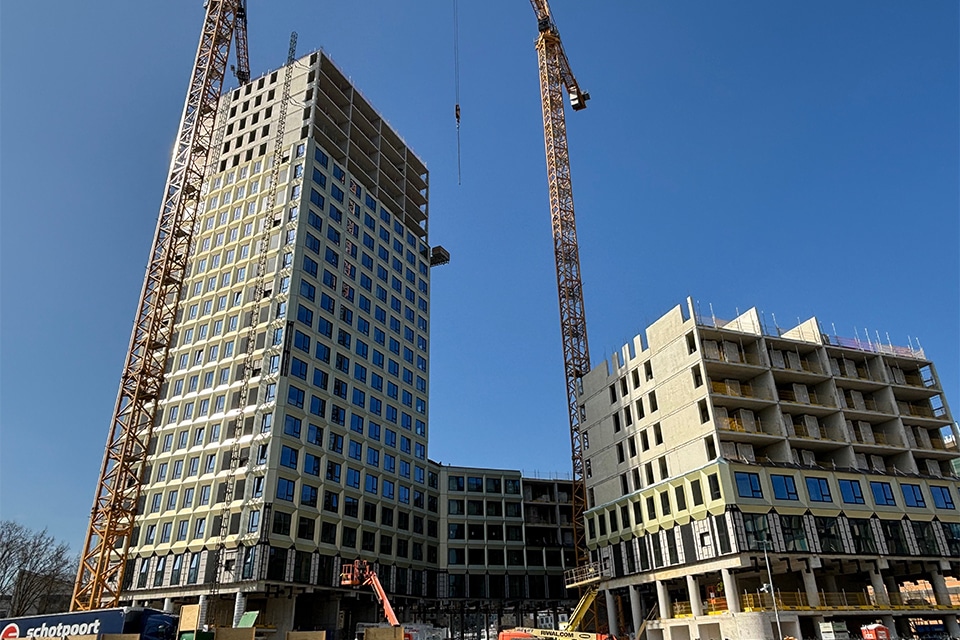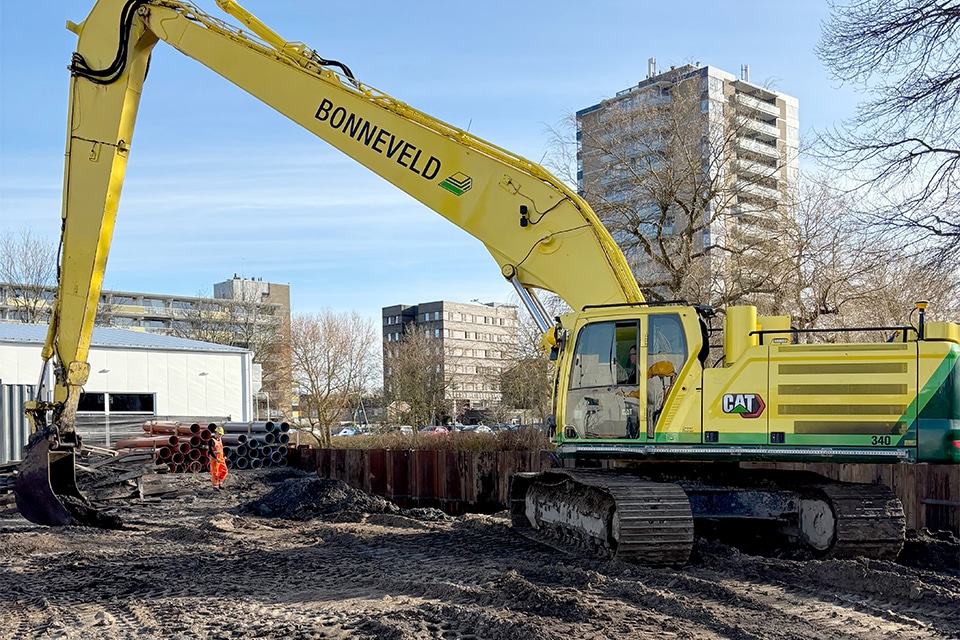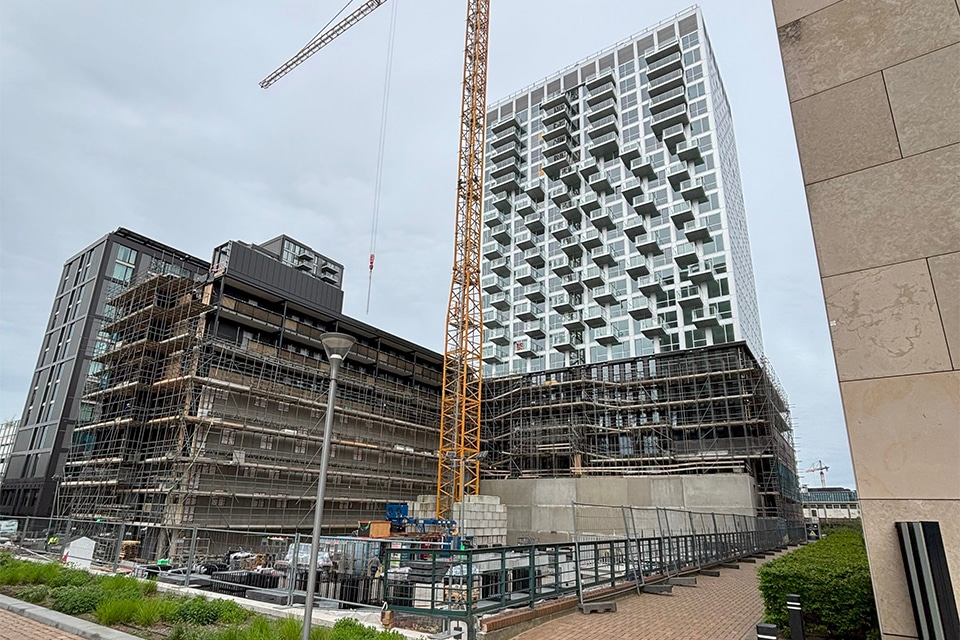
In conversation with developer Maarten de Gruyter of Boelens de Gruyter.
"This kind of development gives a piece of soul to a building: giving a building that has been there for decades a new life."
From multiple perspectives, we highlight the Rembrandt Park One project in Amsterdam. We sat down with project developer Maarten de Gruyter of Boelens de Gruyter. Why are they initiating this particular project? We also talk to him about his vision when it comes to sustainability now and in the future and about developments in the market.
Boelens de Gruyter is the developer initiator of the special project Rembrandt Park One. They specialize in such inner-city projects. "It is similar to, for example, the Parooltoren, the Trouw building and the Jan Bommerhuis in Amsterdam. These are all inner-city properties whose location is good, but the area needs an upgrade, and has potential to become the place-to-be. While preserving the current real estate."
A piece of soul
Boelens de Gruyter's vision stems from the perspective of sustainability and speed. But also from the vision that this way of developing gives a bit of soul to a building: giving new life to a building that has been there for decades. What makes this particular project so special? "This office building within the ring of Amsterdam, completely surrounded by greenery, is a unique location. With the arrival of two new buildings, Rembrandt Park Two and Three, you get a campus. With the waterfront restaurant, we are creating a destination in itself. When we started this project, I was standing on top of the building's roof with the investor and I said: I don't think I have to explain much. Everyone agreed. Right in the middle of Rembrandt Park with fantastic views of the city."
Sustainability is a prerequisite, not a USP
Sustainability is high on society's agenda. Existing buildings are being renovated or transformed to meet sustainability requirements.
That's a big task for developers and contractors. When asked what his vision is when it comes to sustainability, Maarten has a clear answer. "There are cost aspects to every degree by which you make a building more sustainable. At the level of Rembrandt Park One, for example, it is crucial that companies are intrinsically motivated to develop sustainable buildings, because it is considered a requirement by both investors and tenants."
Building for Humans
So in Boelens de Gruyter's sustainability vision, a sustainable building is a precondition and not a USP. "You also have to start looking at how people can function optimally. Building for Humans is what we call that. We put a lot of time into researching what a green environment does for the well-being of employees. Think productivity and absenteeism. That's huge. You can make a building any way you want, but if it's not pleasant to work or live in then it misses the mark."
Durable design
When it comes to sustainability in new construction, Maarten says it is crucial that when you develop, you take into account that the building can have a second life in the future. "A concrete example: we have designed buildings with structural office floors, but these are currently parking solutions. If you need less parking in the future you put it to an office purpose. That's where sustainability starts. Sustainability is not just smart solutions in your building or solar panels, for example, it's also about your design."
Market Developments
Developments in the market are anything but favorable, according to Maarten.
"There is a difference between offices and housing. Because of the hugely increased costs, you can no longer develop a new building anywhere in the Netherlands except Amsterdam. As a result, the vacancy rate in existing office portfolios is low, because there is no alternative. That's going to pinch at some point; we need new office buildings anyway."
Intensive cooperation between government and market players
In housing construction in the Netherlands, we are seeing everything come to a standstill. Projects that were not yet in the construction phase and where no end investor was involved are at a standstill. Government and media underestimate this, according to Maarten. "Because the demand for housing is increasing and the supply is not growing as fast, the delta between supply and demand is only increasing. This will undoubtedly lead to another value explosion in the future. Regulation from politics is not going to help. What is being built now are projects that were started ten years ago, the policies of the current administration have no influence on them. If we want those projects to continue, the government will have to work very intensively with market parties."
Podcast episode Maarten de Gruyter
Who is Maarten de Gruyter?
Maarten was born in 's-Hertogenbosch and comes from a lineage of entrepreneurs. He studied in both Brussels and Amsterdam. After completing his studies in International Business, he worked in the real estate sector from 2001 as a developer and investor. Together with Harm Boelens he started Boelens de Gruyter in 2007.
Maarten is a guest speaker on Business News Radio, a columnist for Quote magazine and others, and was voted real estate man of the year in 2018.
Heeft u vragen over dit artikel, project of product?
Neem dan rechtstreeks contact op met Velox.
 Contact opnemen
Contact opnemen



